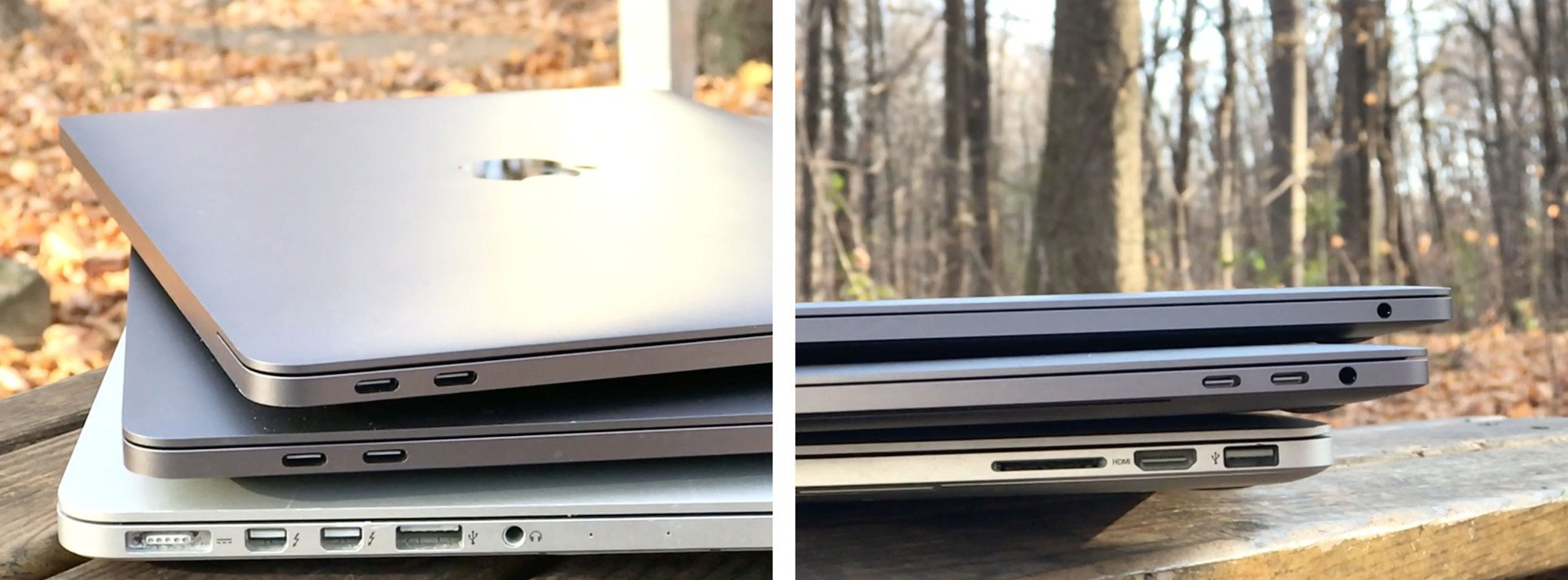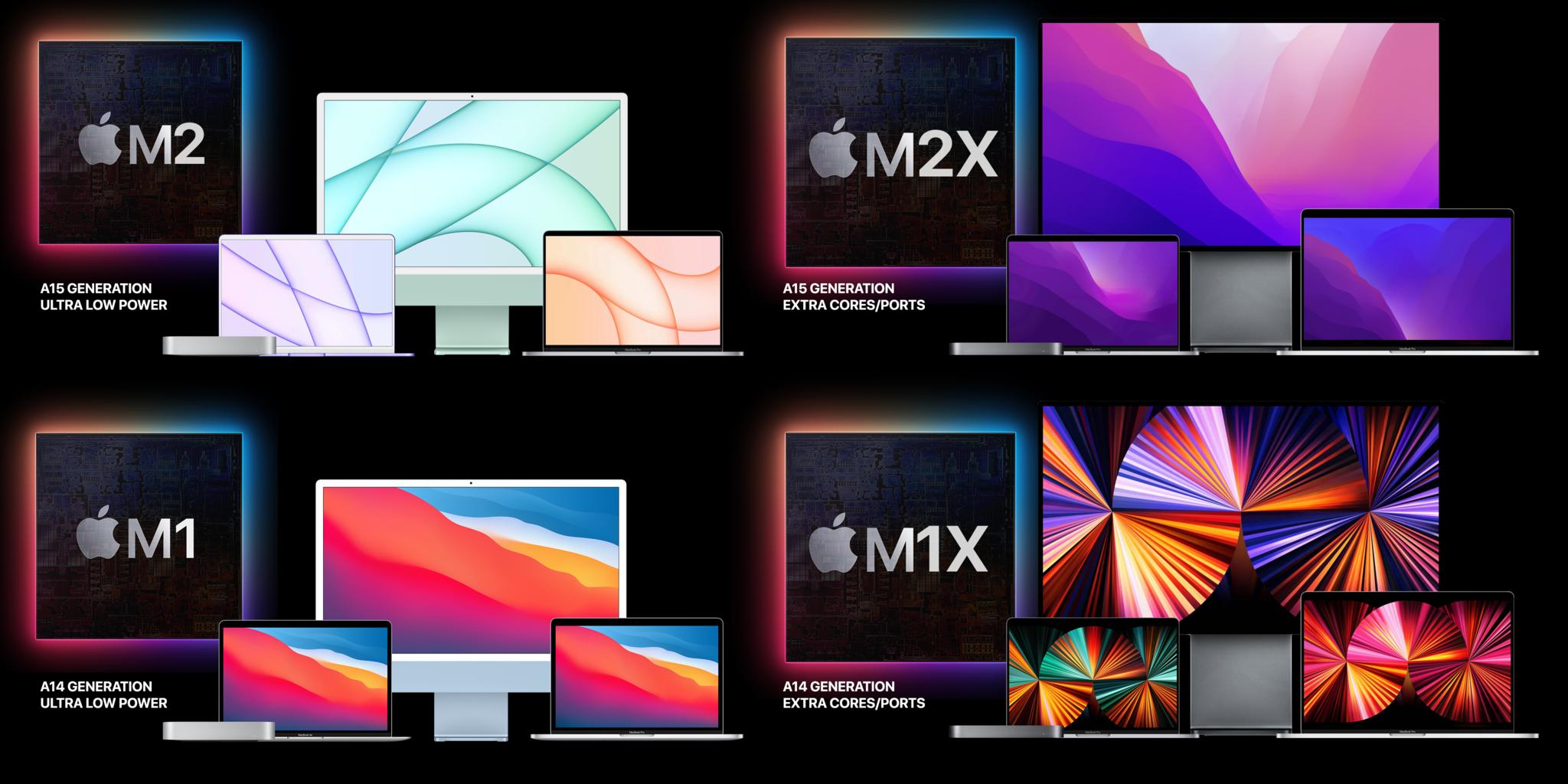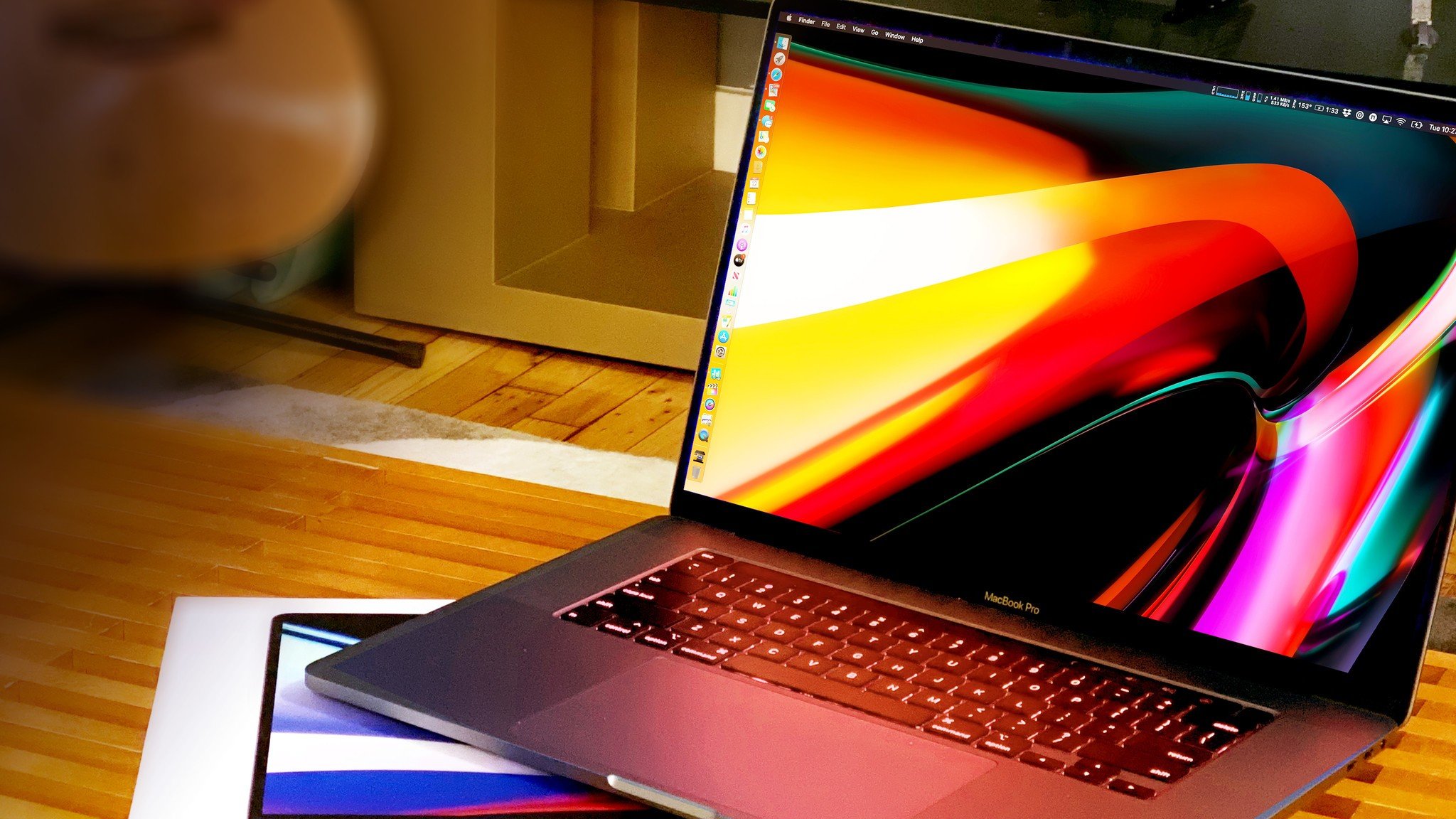M1X MacBook Pro — Deep diving the rumors!

New designs. Flat designs. 14- and 16-inch displays. Mini LED displays! M1X Apple Silicon. Two efficiency cores. Eight performance cores. Up to 32 Graphics cores. Up to 64 GB of RAM, 8TB of SSD. Maybe. Probably… no Touch Bars, but MagSafe, HDMI, and SD Cards. It's the next-generation MacBook Pro and...
...Yeah, I hear you, I feel you, we've been waiting for the Apple Silicon MacBooks Pro for so long now, ever since the moment Tim Cook announced the transition back in June of 2020, and as the first ultra-low power Macs transformed and rolled out from November to April. We've been waiting for the ultra-high-performance Macs. The Pros. We didn't get them last June, but it's looking better than ever for late October, early November this fall.
So, right now, I'm going to go through all the most recent reports and not just recapitulate or regurgitate them for you but dive into all the little details about what these new MacBooks will actually really mean for Pros.
M1X MacBook Pro Design
The ultra-low-power M1 MacBook Air, entry-level MacBook Pro, and Mac mini from last November all stuck with their original, Intel-inside designs. The M1 iMac from back in April, though, well, that went as all-new as it did all colorful. Adopting the same Great Flattening design language that Apple kicked off with the 2018 iPad Pro. And now it sounds like Apple's ready to bring that flat straight back to the Mac… Book Pro.
Which should mean the same basic round-rect shape and squared-off edges, but just none of the curves on the current bottom or top. Which, if true, would look fantastic and be incredibly consistent with Apple's other high-end products.
Since it doesn't sound like the new MacBook Pro will be any thicker, that might leave less space for a camera inside the lid and battery inside the base, which… yeah, more on both those things in a bigger-on-the-inside minute.
M1X MacBook Pro Display
Apple already Thanos snapped the bezels on the bigger MacBook Pro when it went from a 15-inch display to 16-inch back at the end of 2019. Now they just need to do the same thing to the smaller MacBook Pro as well, blipping it from 13-inches to a chassis-filling 14. That should really maximize portability and productivity both.
Master your iPhone in minutes
iMore offers spot-on advice and guidance from our team of experts, with decades of Apple device experience to lean on. Learn more with iMore!
Especially if reports from Steve Moser and MacRumors pan out, and the resolution really is bumped up to 3456 x 2234 for the 16-inch and 3024 x 1964 for the 14-inch, which, I mean, neither would be native 4K, but at 250 ppi, both would be native @2x Retina at last, which would make pixel peepers just way, way happier than the current, scaled-down defaults.
TF International Securities analyst Kuo Ming-Chi, among others, have also reported that these displays are going to be mini-LED, just like the 12.9-inch iPad Pro that debuted back in April. And, hopefully, for both, not just the bigger version like with that iPad Pro.
Mini-LED offers a high dynamic range experience almost on par with OLED, but without some of the drawbacks, OLED still exhibits on larger-sized screens, especially at higher production volumes. Off-axis color shifting, which makes them look overly blue from an angle, pulse-width modulation at low brightness levels, which some people say they can see, and inconsistent peak brightness levels, which can make large areas of white look… splotchy.
Apple's current mini-LED implementation also has a much higher peak brightness than their current OLED implementation, 1600 to 1200, but because mini-LED uses local-dimming zones and isn't self-illuminating like OLED, it does suffer from blooming. Which is like a halo around highlights on dark backgrounds.
Overall, though, mini-LED is still the better choice for laptop and tablet-sized displays sold at Apple scale, at least for now.
The bigger question, at least for me right now, is 120Hz adaptive refresh. The current 16-inch MacBook Pro can be manually toggled between 48Hz and 60Hz, so you can better edit 24fps movies vs. 30fps TV shows.
Adaptive refresh on the iPad Pro can go from as low as 24Hz for static images to 120Hz for scrolling and gaming, which not only provides for a much better experience but much better power efficiency.
I haven't seen any specific rumors suggesting 120Hz is coming to the MacBooks Pro any time soon… but it's increasingly showing up on Windows devices, But I want it, and an Apple nerd can dream.
Now, there was a report from Dylan DKT on Twitter that Apple will be including a version of their new 1080p webcam just above those new displays. Similar if not the same as the one they introduced with the M1 iMac last spring. Which is aces.
It's kinda hard to see how a deeper camera would fit into an even flatter MacBook Pro lid unless that lid is flattened up and not down, so take this one with a camera bump-sized grain of salt for now. But you know what, I'd take a camera bump at this point, even a notch at this point. Just give me a good webcam. But let me know how you feel about it.
M1X MacBook Pro Ports
When it comes to ports, the entry-level M1 MacBook Pro stuck to the 2 USB-C / Thunderbolt 3 ports, now just called USB-4, that Apple introduced back in 2016 when they ditched the old HDMI, SD-card reader, and MagSafe.

According to Kuo Ming Chi, everything old will be new again with the M1X MacBooks Pro. Like… CSI Las Vegas, I guess. With the return of those HDMI, SD-card reader, and MagSafe. Ish.
Also, maybe Ethernet in the power brick like the M1 iMac introduced? I'd love that.
Now, HDMI could be 2.0, like the M1 Mac mini, which offers up to 18 Gigabits per second of bandwidth. Or it could be 2.1, like the A12 Apple TV, which offers up to 48 Gigabits per second. That translates into higher resolutions, like 8K, better frame rates, like 120fps, and even more dynamic HDR. Whether Apple thinks that's as critical to a MacBook, even a MacBook Pro, as it is to TVs, we'll have to wait and see.
SD should be SDXC UHS-II, like the 2020 Intel iMac. MagSafe though… Well, Apple probably wouldn't call it MagSafe again because that name has been conquested by the new iPhone magnetic inductive charging system. So it'll probably just be called a magnetic power connector, like the one on the back of the M1 iMac, only much, much smaller — like USB-C smaller — to fit into the side of the MacBook Pro.
Which makes me wonder just how many USB4 ports — the USB-C Thunderbolt 3 or, hopefully, Thunderbolt 4 hybrid ports — we get to keep.
See, as much as some people love the idea of.. the Return of the HDMI… and SD card Awakens, because it'll let them live a dongle-free, or at least dongle-freer life, that cuts both ways. Right now, we have 4 USB-C / Thunderbolt 3 ports that we can plug into on either side or turn into anything at any time on either side. Including HDMI and SD. On both sides.
But once those become fixed ports in time and space, like evil Doctor Strange or Amy Pond, there's no going back. We won't be able to plug SSDs into HDMI or power into the SD card slot, and if you want power or HDMI on the opposite side, because that's how long the TV cable is or where the plug is situated in the coffee shop, you'll have to dongle-up anyway and waste one of the fewer remaining USB-C ports on it.
Never mind idiots like me who don't use SD cards anymore, but CF-Express, so we'll still need dongled readers even as the built-in just sits there, wasting space. Naked and alone. Laughing at us. Like… the Troy Baker Joker.
Don't get me wrong, it'll make life super easy for prosumers, but it'll be a bear of an inconvenience for hardcore pros who know there's really no such thing as a dongle-free life. So… 2 USB 4 at worst on the 14-inch, maybe three at best on the 16-inch? Let me know what you think.
Same with the Touch Bar, which Mark Gurman of Bloomberg says Apple might just delete this time around.
Personally, I'm fine with that. I mean, I use it for scrubbing through tabs and timelines and easily finding previously buried menu commands, but since introducing it in 2016, Apple's done precisely almost nothing to improve it. No haptics, no taptics, no textures, no nothing. And… I thought it had a ton of potential… But I never want to be more invested in something than the company that makes it, so if nature has selected the Touch Bar for extinction, so be it… like dinosaurs or… YouTube rewind.
M1X MacBook Pro Silicon
Of course, what excites the high-order-bit nerds the most is the chipset powering these new MacBooks Pro. By most reports, and based on Apple's previous patterns, it'll be an M1X or massively extended version of the M1.

Now, M1 was based on A14, the iPhone 12 system-on-a-chip. Since then, Apple has shipped A15, the iPhone 13 system-on-a-chip. Which is what I'd expect M2 to be based on, and the next-generation ultra-low-power Macs like the MacBook Air.
But that raises the question — now that A15 has shipped, will the MacBook Pro get M1X or M2X? And what would the differences really be?
Previous reports suggest Apple was targeting last June for the new MacBooks Pro, but mini-LED constraints pushed them to the fall. If that's true, M1X makes the most sense since we only just got A15 in September. If not, and Apple was always targeting the fall, maybe they were always targeting M2X as well?
Of course, those are both just marketing names, and Apple could include IP from both A14 and A15 generation silicon in M1X, making it a hybrid, or pretty much do anything else they want and call it whatever they want. That's the whole entire point of controlling their own silicon destiny.
Microarchitecture aside, while the A15 Avalanche high-performance cores would be broadly similar to the A14 and M1 Firestorm performance cores in the bigger MacBook Pro thermal envelope, the A15 Blizzard efficiency cores are over 30% faster than A14 and M1 Icestorm efficiency cores, and that could make for more of a difference. Especially if Mark Gurman's report on Apple going with two efficiency cores and eight performance cores for M1X turns out to be accurate. Because that would be two fewer e-cores but four more p-cores than M1.
What that means for battery life… we'll have to wait and see. These are meant to be ultra-high-performance Macs, not ultra-low-power Macs like the M1. But Apple's also introducing low power mode in macOS Monterey, and there's some evidence of a high-performance mode as well, so maybe Apple will once again be using big compute to push the bits just way further than the atoms would otherwise allow?
A15 graphics cores are likewise more performant than the A14 and M1 cores. But either way, Mark's reporting 16 to 32 of them. Again, whether that's 16 for the smaller MacBook Pro and 32 for the bigger, or options for both… in both… we'll have to wait and see, but either way, it means just way more cores to throw at anything, and everything GPU bound.
A15 also has faster Neural Engine cores than A14 and M1, but a lot of that is geared towards camera features like Cinematic Mode on the iPhone 13. In the MacBook Pro, depending on how many of which cores, we could see big leaps in everything from CoreML to AI-based photo filters. Yeah, Super Res Zoom and Deep Fake Luke Skywalker all the things.

What's got me most curious and most excited, though, are the ProRes accelerators on the A15. Because just over two years ago, Apple was introducing giant reprogrammable ASIC Afterburner cards to handle that on the Mac Pro. And now they're hardware accelerated right on the A15 package. Time flies but silicon… it slaps!
I've long been saying Apple Silicon Macs are going to be Afterburner boxes, but I can't wait to see it. Because, along with way lower heat and way longer battery life, it's custom IP developed in tight integration with the hardware and software teams to deliver very specific, ultra-high performance features that are most going to differentiate Apple silicon — and disrupt old, hot, core-centric, really cringe marketing Intel.
Especially if we get the expected RAM and SSD boosts as well. With up to 32, maybe even 64 GB of unified memory on the M1X package, and hopefully the same up to 4TB and 8TB options for storage for the 14-inch and 16-inch, respectively. Apple'd be an absolute daisy if they do.

Rene Ritchie is one of the most respected Apple analysts in the business, reaching a combined audience of over 40 million readers a month. His YouTube channel, Vector, has over 90 thousand subscribers and 14 million views and his podcasts, including Debug, have been downloaded over 20 million times. He also regularly co-hosts MacBreak Weekly for the TWiT network and co-hosted CES Live! and Talk Mobile. Based in Montreal, Rene is a former director of product marketing, web developer, and graphic designer. He's authored several books and appeared on numerous television and radio segments to discuss Apple and the technology industry. When not working, he likes to cook, grapple, and spend time with his friends and family.
